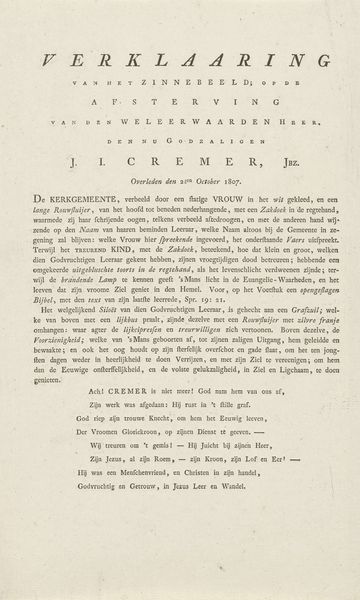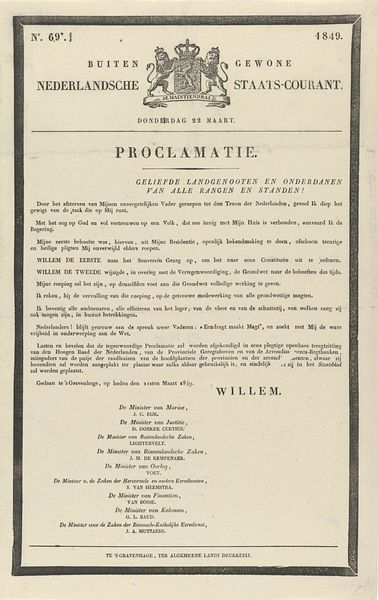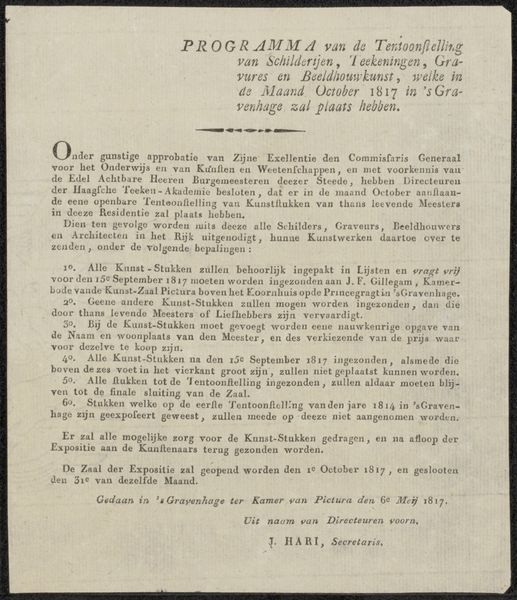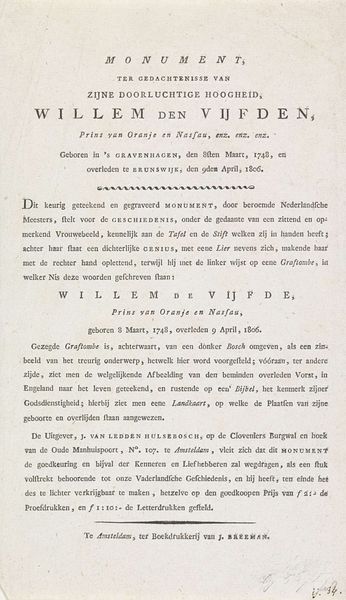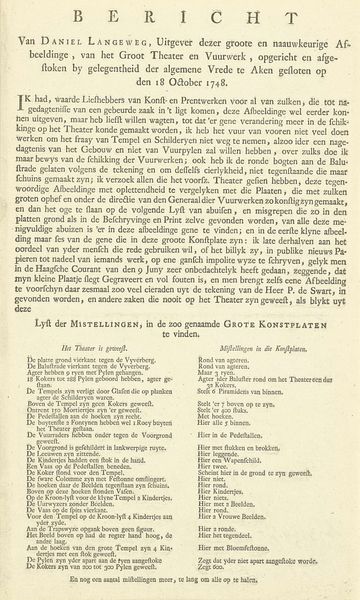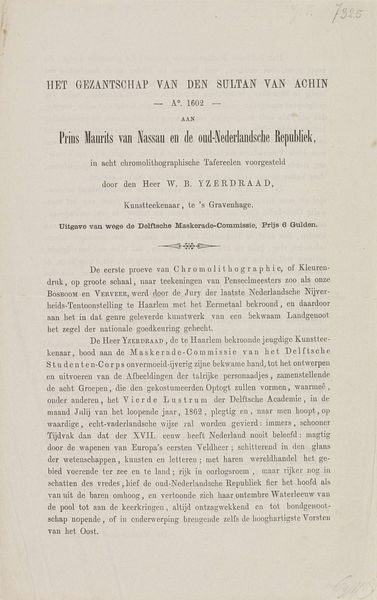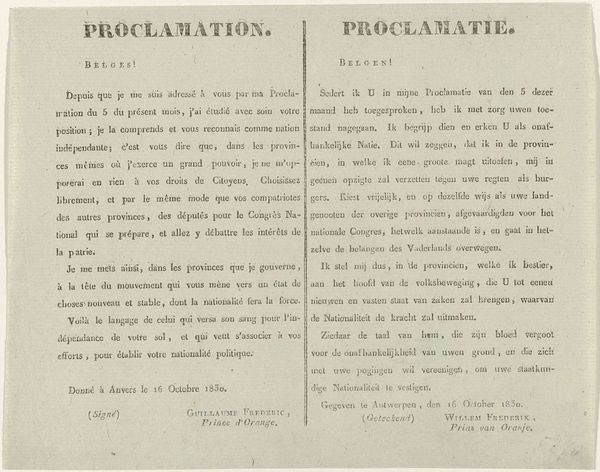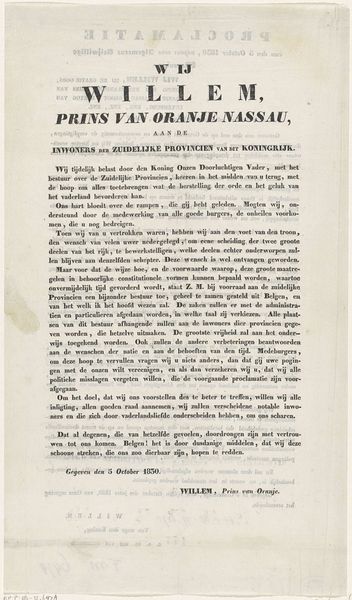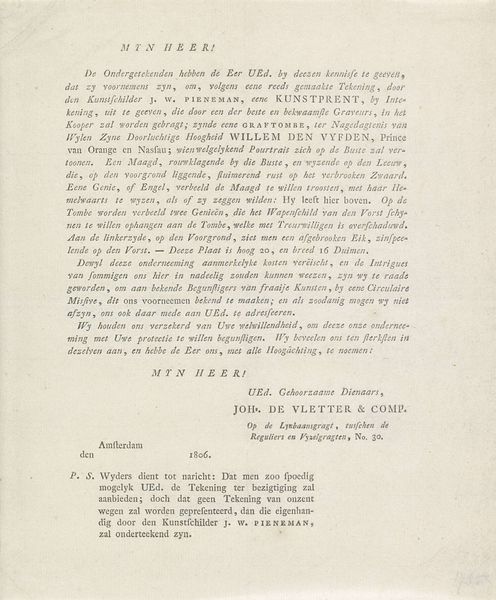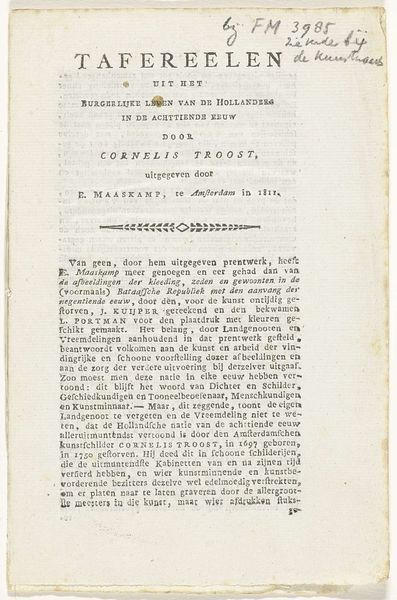
Boekje bij het souvenir aan het huwelijk van prins Hendrik en prinses Maria van Pruisen, 1878 1879 - 1880
0:00
0:00
print, typography
#
script typeface
# print
#
hand drawn type
#
paragraph style
#
typography
#
journal
#
fading type
#
script
#
stylized text
#
thick font
#
handwritten font
#
classical type
#
decorative-art
Dimensions: height 155 mm, width 240 mm
Copyright: Rijks Museum: Open Domain
Curator: Let's discuss this fascinating piece from the Rijksmuseum's collection: a printed booklet commemorating the wedding of Prince Hendrik of the Netherlands and Princess Marie of Prussia. It dates from around 1879-1880, almost a year after the marriage itself. Editor: My initial impression is one of stark formality. The typography is very rigid, yet intricate; it reminds me of official documents, maybe even declarations. The color is neutral too, which creates a distance. It feels as though it's about conveying information, rather than evoking emotion. Curator: Exactly. And that functional aesthetic speaks to the item’s purpose: a souvenir. I am interested in how such mass-produced commemorative ephemera served to disseminate royal spectacle to a wider populace. Its creation would have involved typesetters, printers, distributors—a network of laborers contributing to the construction of royal image. The quality of materials also reflects class divisions—a relatively cheap keepsake accessible to the emerging middle class. Editor: Good point. Its purpose as a souvenir is very clear in the title; I wonder who comprised its intended audience, and what the relationship of the printed material to public opinion might have been in this period. The booklet relays details regarding the marriage celebrations, noting the austere conditions of the event taking place in Potsdam. You get a real sense of what that event would have been, just by reading it. This also speaks volumes of the evolving role of the monarchy itself; increasingly subject to public scrutiny and needing to calibrate the imagery that projected them to their nation. Curator: Note the way the text itself highlights a desire for modesty in the royal couple's celebration; suggesting certain circumstances contributed to that austerity: events with the Emperor and seasonal obligations limited attendees to immediate family, suggesting the image was curated carefully for wider consumption. Editor: And in considering that wider distribution, what we perceive to be an ordinary example of typography would itself have created norms of style and visuality amongst emerging literate audiences in Europe, demonstrating to us the socio-political forces behind such an artwork. Curator: Absolutely. This seemingly simple commemorative print opens up fascinating perspectives onto labor, class, and the manufacturing of royal image in the late 19th century. Editor: A window into the careful orchestration of a royal event, meticulously recorded and distributed to shape public memory. It prompts questions about how historical context fundamentally informs both its making and our interpretation of it.
Comments
No comments
Be the first to comment and join the conversation on the ultimate creative platform.
